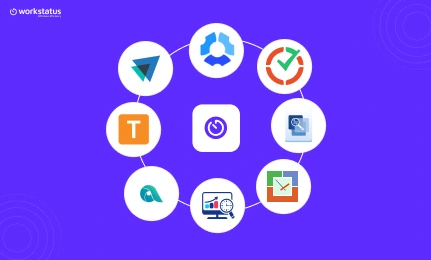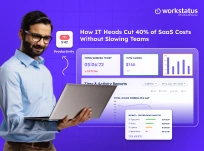Table of Contents
Higher hours do not prove sincerity but hide inefficiency and stall success.
Don’t you think counting the hours is only valid when every employee receives quantifiable work of an equal difficulty level and volume? In addition, every employee is equally dedicated and productive. Has it ever been the case?
On the contrary, the overemphasis on hours may lead to:
- Unmet deadlines
- Poor productivity
- Employee burnout
- Unbalanced workloads
These possibilities reveal why IT leaders have discarded the hour-based system for measuring employee engagement. As each of these possibilities poses the potential, outcome tracking for IT teams has emerged as a more reliable approach.
It enables you to realign the teams with business objectives, rather than developing a false sense of workforce management.
To put it simply, outcomes-based measurement is about measuring the output instead of hours worked.
Why Shift From Hours to Outcomes?
Traditional time tracking counts hours but doesn’t measure real value. This section explains why focusing on outcomes matters more.
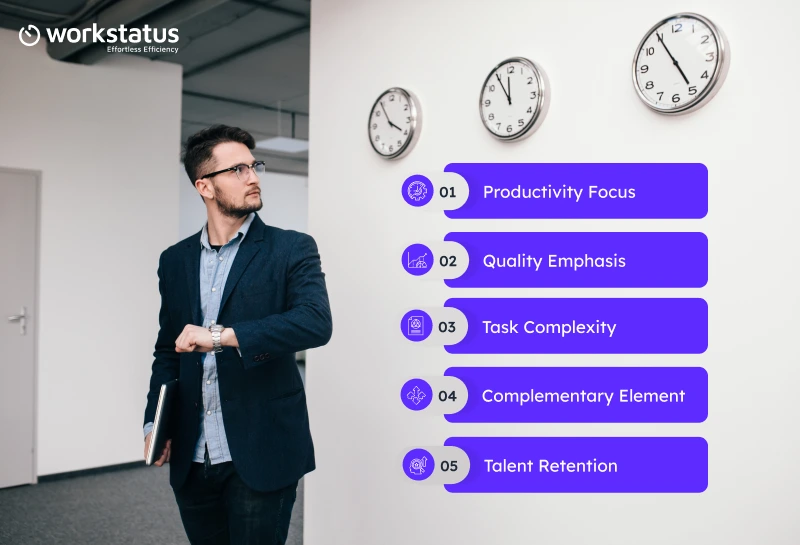
- Productivity Focus: Outcome tracking ensures that the effort your team puts in translates to meaningful business results. Simply logging hours isn’t enough.
- Quality Emphasis: Deliverables must meet quality standards. Outcome-centred performance tracking for IT teams measures not just quantity, but quality.
- Task Complexity: Some tasks take more skill and time. Outcome tracking software for IT teams recognizes this complexity alongside completion speed.
- Complementary Element: Outcome tracking works as a supportive element that companies need to implement their growth strategies.
- Talent Retention: Clear goals and recognition through productivity tracking tools for IT companies improve motivation and reduce turnover.
By understanding this shift, IT managers can move beyond just counting hours and start measuring true team impact. Next, we’ll define what outcome-based tracking means.
What is Outcome-Based Tracking?
Outcome-based tracking for IT teams measures success by what is achieved, not how long it takes. Here’s what it involves.

- Goal Achiеvеmеnt: Sеtting clеar objеctivеs еnsurеs еvеryonе knows what succеss looks likе.
- Projеct Dеlivеry: Combining timе tracking softwarе for IT managеrs with outcomе mеtrics hеlps еnsurе projеcts arе dеlivеrеd on timе and to scopе.
- Quality Mеtrics: Bеyond dеadlinеs, it needs to monitor adhеrеncе to coding standards, tеsting rеsults, and bug ratеs.
- Usеr Satisfaction: Collеcting fееdback hеlps assеss whеthеr thе еnd usеr’s nееds arе mеt.
- Businеss Impact: With workforcе managеmеnt tools for the IT industry, you can mеasurе cost savings, еfficiеncy improvеmеnts, and rеvеnuе impact.
Now that wе undеrstand thе concеpt, lеt’s look at thе kеy еlеmеnts nееdеd to build an outcomе-drivеn tracking framеwork.
Common Challenges IT Managers Face in Measuring Outcomes
Tracking outcomes is not without hurdles. Here are common obstacles and why they matter.
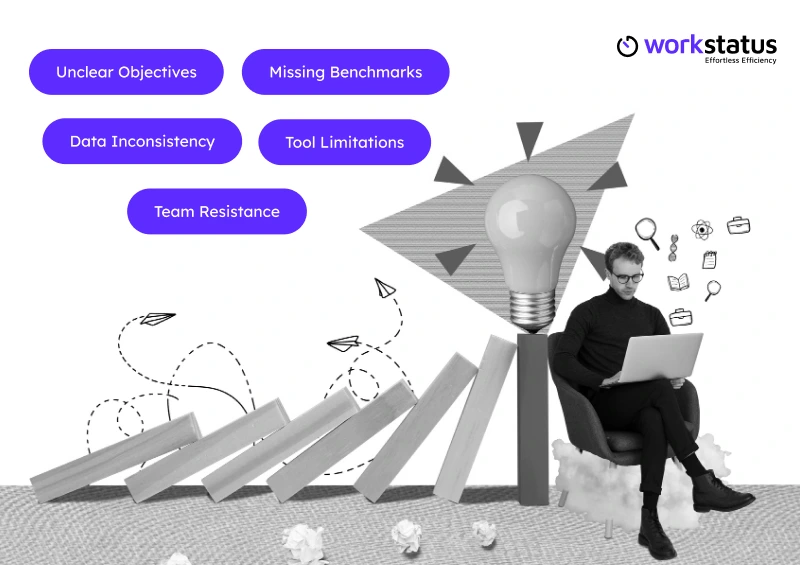
- Unclear Objectives: Without well-defined goals, outcome measurement becomes guesswork.
- Missing Benchmarks: Lack of historical data makes it hard to assess improvements.
- Data Inconsistency: Poor data quality leads to misleading results.
- Tool Limitations: Outdated or incompatible systems can’t support results-driven time tracking effectively.
- Team Resistance: Cultural pushback often slows adoption of new tracking methods.
Recognizing these challenges helps IT managers prepare better strategies.
Next, we’ll see how Workstatus is a reliable time tracking software for IT managers that helps them solve these problems.
How Workstatus Supports Outcome Tracking for IT Teams?
Workstatus offers practical features designed to measure outcomes effectively in IT teams.
- Real-Time Project Progress Monitoring: Visualize the live updates on project status to make timely decisions. Thus, manage your IT teams more efficiently with data-driven insights.
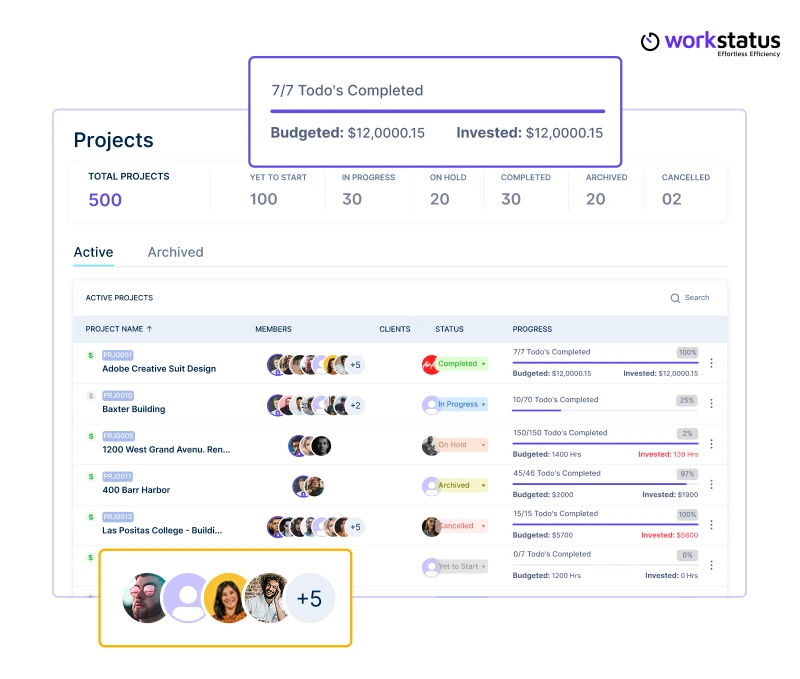
- Task and Milestone Tracking: Visual dashboards help you track progress clearly, making them perfect for outcome tracking software for IT managers. Digital components such as Kanban Boards and Gantt Charts offer you a consolidated understanding of task progress in board and chart formats, respectively.
![]()
- Productivity Insights for Performance Evaluation: Identify patterns and bottlenecks to optimize workflows. With the same, you have a better and more evolved operational framework.
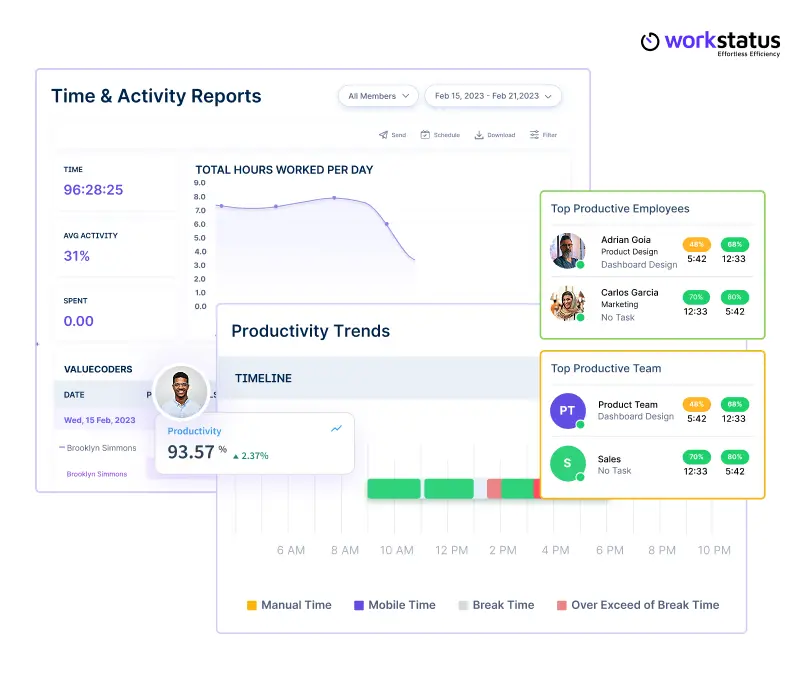
- App & Website Usage for Quality Assurance: Ensure focus with productivity tracking tools for IT companies that monitor relevant work applications. It enables you to determine the necessary apps and websites and optimize their usability by IT teams.
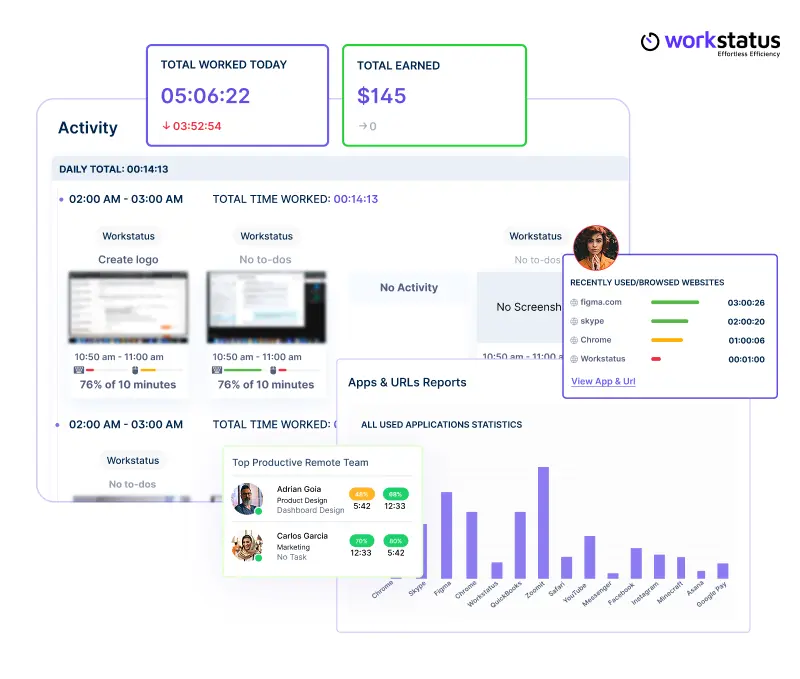
- Customizable Reports for Stakeholder Visibility: Generate tailored reports highlighting outcomes that matter most to different clients. It offers the needed insight and visuals to conduct predictive analytics, making you future-ready.
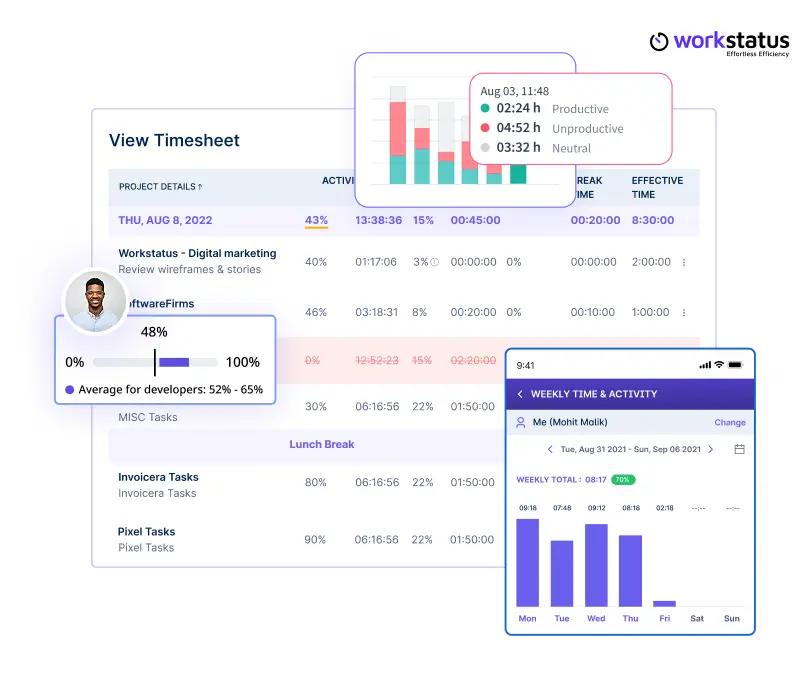
With Workstatus, you can integrate outcome-based tracking seamlessly into your existing tools and workflows, which is our next topic.
Integrating Outcome Tracking for IT Teams With Existing Workflows
Shifting from hours to outcomes does not require rebuilding your IT processes from scratch.
Instead, the goal is to align outcome-based tracking software for IT managers with the workflows your teams already follow, whether Agile, Scrum, or Waterfall. A structured approach makes adoption seamless and less disruptive.
Steps to integrate effectively include:
- Map Current Processes: Identify where time tracking tools currently fit and replace or augment them with outcome-focused metrics.
- Align With Methodologies: Set up project management software so goals, milestones, and deliverables become measurable performance indicators for IT teams.
- Connect Tools and Data: Use integrations with productivity monitoring software to sync real-time data across dashboards for unified visibility.
- Train Teams Gradually: Introduce outcome-tracking features step by step to avoid resistance and ensure adoption.
- Review and Adjust: Regularly evaluate alignment and refine KPIs to reflect actual business impact.
By embedding outcome-based tracking within existing workflows, IT managers can build accountability without disrupting productivity.
Measuring Success – What to Track Beyond Hours
To truly measure outcomes, focus on these key indicators:
- Delivery within scope, on time, and on budget
- Defect rates and rework percentages
- End-user adoption and satisfaction rates
- Cost savings from optimized workflows
- Revenue growth linked to IT deliverables
Tracking these metrics helps you quantify real business value and drive continuous improvement.
Final Thoughts
Thе IT landscapе is еvolving fast. Thе quеstion for managеrs is no longеr “How many hours wеrе workеd?” but “What was achiеvеd in thosе hours?”
Using Outcome tracking for IT teams shifts focus from mеrе prеsеncе to mеasurablе valuе, еmpowеring IT managеrs to lеad tеams that consistеntly dеlivеr quality rеsults.
Workstatus has features that offer you insight to carry out outcome-based time tracking.
If you’rе still rеlying on hours alonе in 2025, it’s timе to catch up and lеad your tеam with thе tools and stratеgiеs that mattеr.
FAQs
Ques. Why should IT managers move away from tracking hours?
Ans. Hours only show attendance, not actual contribution. Many IT tasks vary in complexity, and measuring by hours misrepresents effort. Outcome-based tracking focuses on real results, completed features, resolved bugs, and business impact, giving IT managers a truer picture of productivity.
Ques. What problems can arise from relying solely on logged hours?
Ans. Relying only on hours can mislead managers, create unbalanced workloads, and demotivate high performers. It often results in missed deadlines and higher project pendency. Teams look busy on paper, but delivery and quality suffer.
Ques. How does outcome-based tracking benefit IT teams in hybrid setups?
Ans. It ensures fairness by aligning work with clear goals instead of arbitrary hours. Remote and on-site developers are judged by results, not presence. This boosts motivation, balances workloads, and reduces friction in hybrid teams.
Ques. Can outcome-based tracking work alongside time tracking?
Ans. Yes. Outcome-based tracking doesn’t discard time logs completely; it complements them. While hours provide context, outcomes reveal true value. Together, they give IT managers a complete view of efficiency and performance.
Ques. What outcomes should IT managers measure beyond hours?
Ans. Key metrics include on-time delivery, defect and rework rates, code quality, end-user satisfaction, cost savings, and revenue contribution. These indicators show how IT directly impacts business success.




